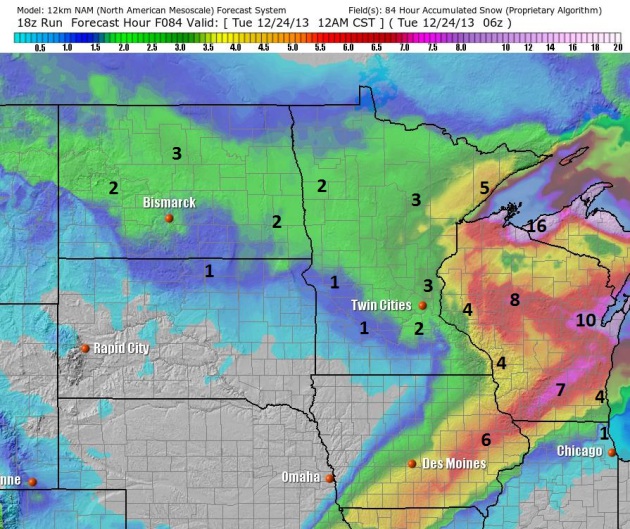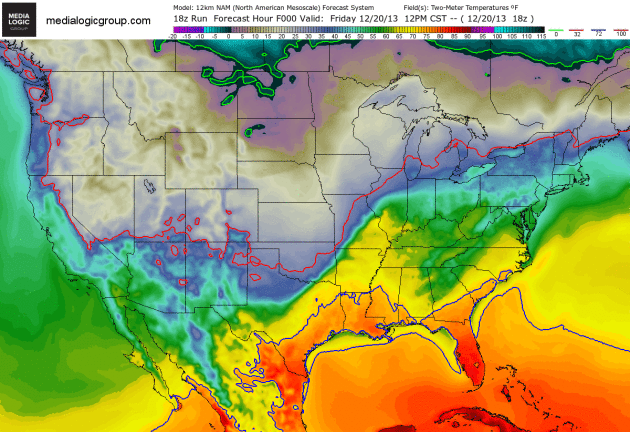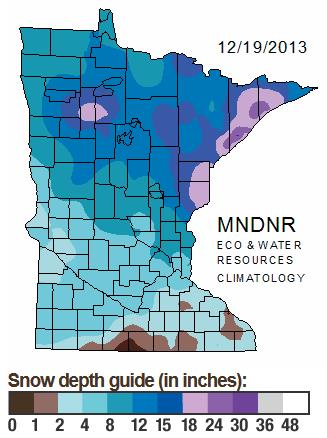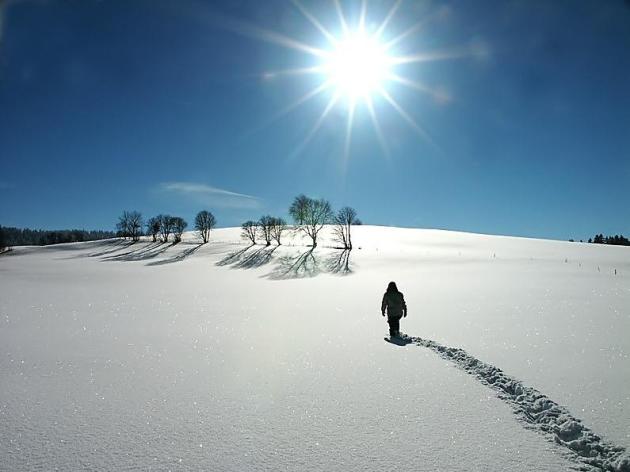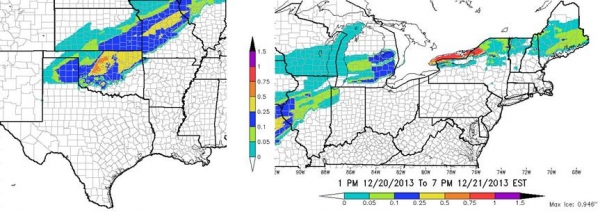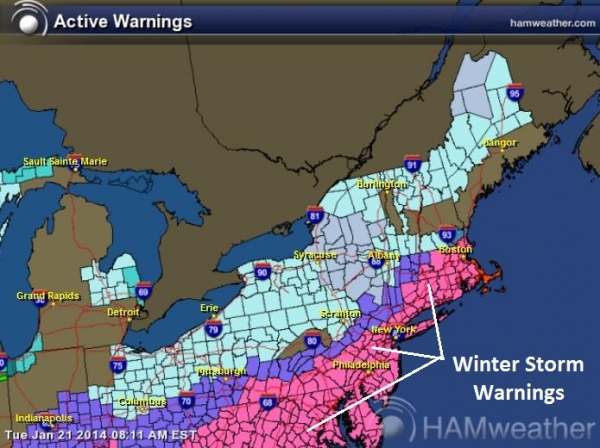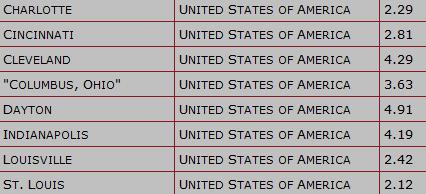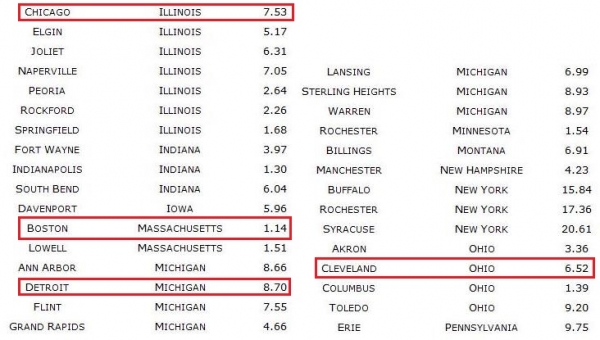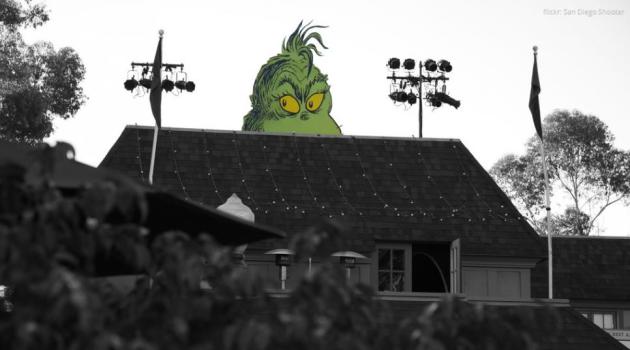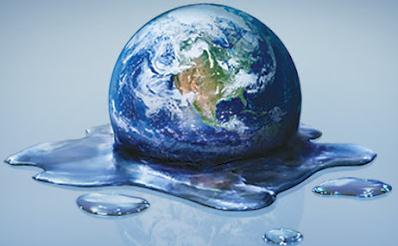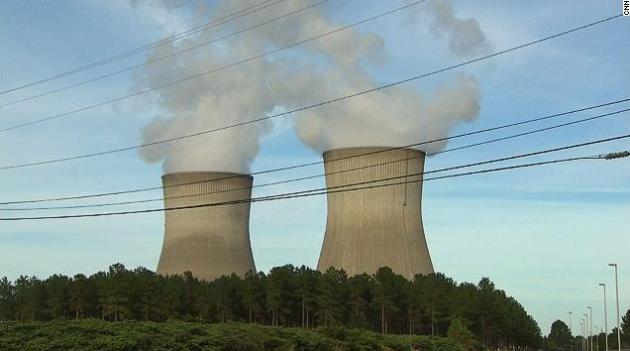Bottoming Out
Welcome
to the worst day of the year to get a suntan. Or power the new solar
panels up on the roof. Even though Earth is closer to the sun in winter
than in summer a 23 1/2 degree tilt on its axis means the northern
hemisphere will see the least daylight of the year today: 8 hours and 46
minutes of daylight at MSP.
Yes, it seems the sun sets shortly
after lunch. Cheer up, we pick up nearly 4 minutes of daylight by New
Year's Eve, almost an hour of daylight by the end of January.
Our
coldest weather historically comes the third week of January. It takes a
few weeks for a higher sun angle to compensate for long nights and cold
air brewing over Canada.
For me December 21 is a psychological turning point. The Nadir. The Depths of Darkness. It's all uphill from here.
At
least Old Man Winter won't complicate your shopping & travel plans
too much. A major storm spawns tornadoes over the deep south today;
heavy snow spreading into the Quad Cities, Madison & Milwaukee by
Sunday. A reinforcing jab of Yukon Delight may spark a plowable, 2-3
inch snowfall here late Sunday, most of the snow coming after stores
close.
We'll be lucky to climb above zero Monday; 20s Christmas Day before another relapse.
Looks like a real winter huh?
On Edge.
If you're driving into Wisconsin or eastern Iowa you'll run into
heavier snow Saturday night into Sunday, but the immediate Twin Cities
area may pick up 2-3" of powdery snow Sunday and Sunday night. Projected
amounts range from 3-4" at Des Moines to 7" at Madison, 10" near Green
Bay, maybe an inch or two for Chicago. NAM data: NOAA and Ham Weather.
Another Arctic Smack.
The duration of the arctic chill is dropping - slightly, from what we
endured in early December. Subzero lows are likely Tuesday, again Friday
morning of next week, double-digit negative numbers outside the MSP
metro. By next weekend highs may be climbing into the 20s and 30s.
Graph: Weatherspark.
Remarkable Extremes.
Highs approach 70F. in Washington D.C. at the same time subzero air
drills into the Dakotas, chill factors dropping to -30F. The result: an
impressive snow, ice and rain storm, capable of whipping up tornadoes
over the Lower Mississippi Valley. 84 hour 2-meter temperature
prediction courtesy of NOAA and Ham Weather.
Welcome Winter Solstice.
Paradoxically, the Earth is actually closer to the sun in the winter
than it is in summer, but that won't help much in the coming weeks. As
you muddle through a cold, dark Saturday realize we pick up 3 minutes of
additional daylight by the end of December. Can spring be far behind?
Yep.
Graphic credit: Tampa office of the National Weather Service.
Latest Minnesota Snow Cover. The map above, courtesy of the
Minnesota DNR,
does not include the snow that fell Thursday night. There's a good
8-20" snow on the ground over much of central and northern Minnesota, as
much as 18-36" along the North Shore of Lake Superior.
An Increasingly Promising Winter For Minnesota Snow Lovers.
A great winter for snowmobilers and cross country skiers? It sure looks
that way. Here's an excerpt from Dr. Mark Seeley and his weekly
WeatherTalk Newsletter: "...
Snowfall
has been both frequent and heavy for many observers in Minnesota this
month. Both International Falls and Duluth report snowfall on 12 of the
first 20 days. Many northern observers have recorded over 20 inches of
December snowfall so far, including International Falls, Cass Lake,
Grand Rapids, Leech Lake, Babbitt, Chisholm, Floodwood, Grand Marais,
Grand Portage, Bruno, Cloquet, and Wright. Areas around Two Harbors have
reported over 40 inches of snowfall. According to the DNR areas along
the north shore of Lake Superior are reporting snow depths in excess of
two feet...."
Winter Weather Terminology. Here's an excerpt of a great summary of winter precipitation types and terminology from the
Des Moines office of the National Weather Service:
- Blizzard:
Blowing and/or falling snow with winds of 35 mph or greater, reducing
visibilities to a quarter of a mile or less for at least three hours.
Winds lofting the current snow pack and reducing visibilities without
any falling snow is called a ground blizzard.
- Freezing Rain:
Caused by rain falling on surfaces with a temperature below freezing.
The rain freezes upon contact with the ground. Large build-ups of ice
can down trees and power lines and coat roads.
- Sleet: Rain/melted
snow that has begun refreezing when it reaches the ground. Sleet tends
to be softer than hail and is easily compacted. Sleet can make roads
slippery very quickly.
- Wind Chill: The apparent temperature the body feels when wind is factored into the equation. See the Wind Chill page for more information.
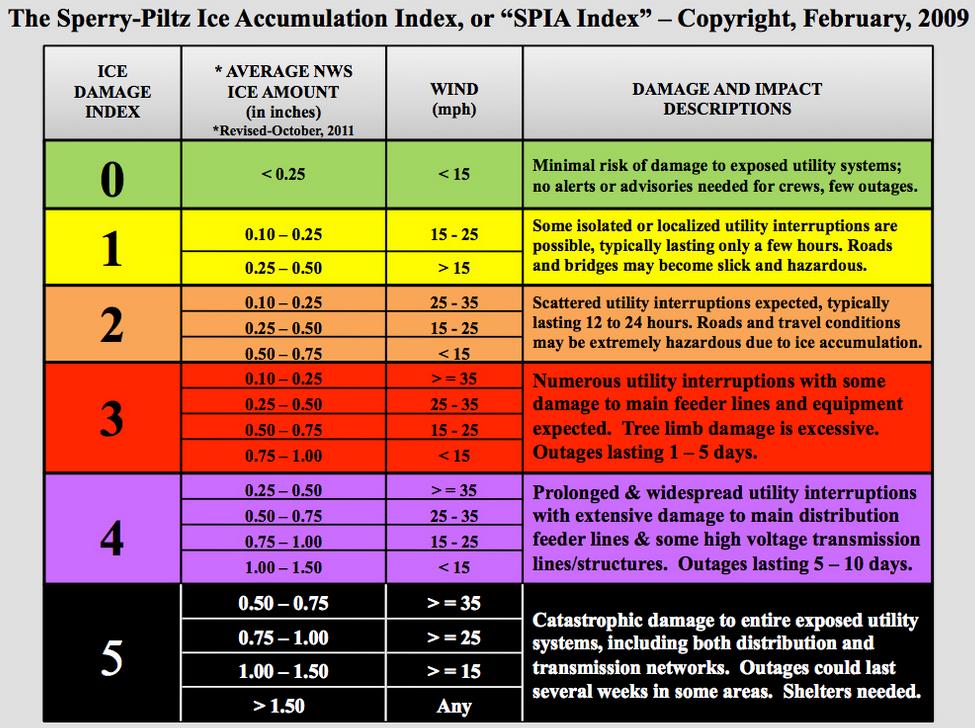 What Is The Sperry-Piltz Ice Accumulation Index?
What Is The Sperry-Piltz Ice Accumulation Index?
Thanks to Des Moines uber-meteorologist Jason Parkin for passing this
along, a scale that measure impacts from glaze ice on a scale from 1 to
5, much like hurricanes. Here's
more information: "
The
Sperry–Piltz Ice Accumulation Index, or SPIA Index, is a
forward-looking, ice accumulation and ice damage prediction index that
uses an algorithm of researched parameters that, when combined with
National Weather Service forecast data, predicts the projected
footprint, total ice accumulation, and resulting potential damage from
approaching ice storms. It is a tool to be used for risk management
and/or winter weather preparedness. The SPIA Index is to ice storms what
the Enhanced Fujita Scale is to tornadoes, and what the Saffir–Simpson
Scale is to hurricanes. Previous to this hazard scale development, no
such ‘forward-looking’ ice accumulation and ice damage index had ever
been utilized to predict – days in advance – the potential damage to
overhead utility systems, along with outage duration possibilities, from
freezing rain and/or ice storm events."
Alerts Broadcaster: Issued Friday evening by
Alerts Broadcaster.
* Risk grows of a major tornado outbreak Saturday; best chance PM hours - possibly well after dark in Mississippi.
*
Ice Storm Warnings posted for much of Oklahoma for a significant
accumulation of glaze ice capable of paralyzing travel and power
outages.
* Chicago may pick up a couple inches of slushy snow, but the heaviest snow bands are forecast to stay north and west of KORD.
TPI: Cause For Concern.
Our Tornado Prediction Index did a very good job with the November 17
tornado outbreak, pinpointing central Illinois 24 hours in advance. The
same algorithms show a significant risk of large, supercell
thunderstorms capable of EF2-EF4 tornadoes over southeastern Arkansas by
mid afternoon Saturday, but the greatest risk comes over Mississippi
during the late evening hours, well after dark. This could make tracking
and verifying any tornadoes even more difficult, heightening the risk
to the public. I expect a few large, violent, potentially deadly
tornadoes across the Lower Mississippi River Valley during the PM hours
Saturday.
Moderate Risk.
We'll see if NOAA SPC elevates any of this region to a "high risk" by
tomorrow, but a moderate risk implies an enhanced risk of (large,
violent) tornadoes. There is a 45% risk of severe weather within 25
miles of any location in the purple-shaded region; a 10% or higher
chance of significant severe weather within the hatched area. Facilities
and staff from Louisiana and Arkansas into western Tennessee and
Mississippi should be prepared.
Updated Snowfall Projections.
Chicago may pick up a couple inches of slushy snow at the tail-end of
the storm, precipitation falling as rain (mixed with a little ice) at
the height of the storm Sunday. The heaviest snow band sets up from near
Tulsa and Wichita to Springfield, the Quad Cities, Peoria, Rockford,
Madison, Milwaukee and Green Bay Sunday as the storm pushes northeast.
The Twin Cities may see a 2-3" snowfall Sunday.
Ice Storm Risk.
Ice Storm Warnings are posted for Oklahoma, and for good reason. As
much as a half inch of glaze ice may build up on highways and
powerlines, especially north and west of Oklahoma City, a quarter inch
for the Tulsa area capable of significant power outages. Ice is likely
over central Missouri, but St. Louis should be spared any major icy
headaches. A light glaze icing is possible into northern Illinois and
southern Wisconsin, reaching Lower Michigan by Sunday afternoon/evening.
A very light coating of ice is possible over northern New England as
well.
Looks Like A Holiday.
The warning map is lit up with watches, warnings and advisories, Winter
Storm Warnings from central Oklahoma to southern Wisconsin, Flash Flood
Watches from Arkansas into Indiana, Ohioa and even western New York
State. As much as 3-4" rain falling on frozen ground will result in
almost immediate run-off and flooding of not only urban areas but some
small streams as well. The very latest warnings are
here.
Flash Flood Potential.
Gulf moisture surging northward to fuel the weekend storm, and the
result will be some 3-5" rains, almost 1-2 month's worth of rain falling
in less than 36 hours. Areas that normally flood, poor drainage areas
and small streams, may experience overflows this weekend from near
Little Rock to Evansville, Indianapolis and Columbus.
Projected Rainfall Amounts.
Our internal models show numerous 2-4" rainfall amounts from St. Louis
and Louisville - as far north and east as Cleveland this weekend.
Snowfall Forecasts.
The models may still be over-doing snow amounts for Chicago, but closer
to Rockford I expect significant amounts, in excess of 6-7". The
heaviest amounts may fall from Davenport and Moline to Madison and
Milwaukee, where the atmosphere is cold enough for all-snow.
Near-Blizzard Conditions.
Our internal BPI (Blizzard Potential Index) shows the greatest risk of
low visibility and strong winds creating near-blizzard criteria from
northeastern Missouri and far western Illinois into southeastern
Wisconsin.
Maximum Hassle Factor at ORD and MDW.
Taking a closer look at the projected BPI Sunday morning may bring the
heaviest burst of snow and lowest visibilities with this storm, capable
of disrupting travel by land and air. Conditions slowly improve Sunday
afternoon with conditions pretty much back to normal (whatever that is)
by Monday.
Summary: The risk of a major severe
storm outbreak, including a few large, violent tornadoes, has increased
since Friday morning. It's impossible to determine, this far in advance,
whether major metropolitan areas of the Lower Mississippi Valley will
be impacted, but we can't rule out that possibility. Facilities from
Lake Charles and New Orleans to Jackson and Memphis should monitor
weather conditions very closely over the next 24 hours and be prepared
to take steps to enhance safety. Severe icing is likely from Oklahoma
into central Missouri, a stripe of plowable snow from Kansas City to
Madison and Milwaukee, flooding rains over much of the Midwest and Ohio
Valley. Meanwhile record highs are possible out ahead of the storm,
readings in the mid to upper 60s in Washington D.C., 70s across the
Carolinas. It's one crazy weather map.
Paul Douglas - Senior Meteorologist - Alerts Broadcaster
Drones Could Revolutionize Agriculture, Farmers Say. Here's an excerpt from a story at
Huffington Post: "...
While
Americans are abuzz about Amazon's plans to use self-guided drones to
deliver packages, most future unmanned aircraft may operate far from the
nation's large population centers. Experts point to agriculture as the
most promising commercial market for drones because the technology is a
perfect fit for large-scale farms and vast rural areas where privacy and
safety issues are less of a concern. Already, farmers, researchers and
companies are developing unmanned aircraft systems equipped with cameras
and other sensors to survey crops, monitor for disease or
precision-spray pesticides and fertilizers..."
2013: The Year "The Stream" Crested.
Are we all taking a plunge into a never-ending information river, where
"nowness" trumps perspective? Perhaps. Witness the rise of Twitter and
Google Reader. Is there a place for updated summaries of information,
web sites and blogs? Here's an excerpt from a thought-provoking story at
The Atlantic: "...
There
are great reasons for why The Stream triumphed. In a world of infinite
variety, it's difficult to categorize or even find, especially before a
thing has been linked. So time, newness, began to stand in for many
other things. And now the Internet's media landscape is like a
never-ending store, where everything is free. No matter how hard you
sprint for the horizon, it keeps receding. There is always something
more. Nowness also transmits this sense of presence, of other people,
that you get in a city when you go to a highway overpass and look down
at all the cars at any time of the day or night. Things are happening. I
am not alone. Look at all this..."
Air-Powered Lego Car Hits The Street. I'm feeling more inept than usual with my (previous) Lego creations. Check this out, courtesy of
Gizmag: "
The
perfect do-it-yourself gift for budding designers and architects during
the holiday season has to be Lego. The small blocks of plastic with
millions of design outcomes have entertained many a child since the
early 1950s. Now an ambitious duo has snapped together 500,000 pieces of
the stuff to create the world’s first air-powered Lego roadster..."
Climate Stories...
In U.S. Winters Warming But Precipitation More Nuanced.
Theory is giving way to reality - 30 to 40 years ago scientists
speculated that warming would be greater at northern latitudes and
that's what the data is showing. Here's an excerpt from a story at
Climate Central: "...
Climate
change due to greenhouse gas emissions have in large part caused
temperatures to increase by 1.5°F since 1895 in the U.S. Much of that
increase has come since 1970, and different seasons are warming faster
than others. Winters, which begin in the meteorological sense on
December 1 and run through February, have warmed 0.61°F percade in the
contiguous U.S. from 1970-2012. That's faster than the rate of 0.435°F of warming per decade
experienced over the same period. Winter warming isn’t uniform, though.
California and Nevada have only warmed at a rate of 0.17°F per decade
over that time — the slowest winter warming region in the country — and
the Southeast has gone up just 0.29°F per decade..."
Graphic credit above:
"A map showing winter temperature trends in the U.S. from 1970-2012."
Santa Claus And Climate Change, A Letter To My Grandkids.
Peter Gleick from the Pacific Institute shares a letter he hopes not to
have to write in the year 2020. Here's an excerpt from
Huffington Post: "...
It's
not that you've been bad. Rather the world's governments (sometimes run
by bad boys and girls now grown up) have failed to address the
long-worsening problem of climate change. Santa is the latest climate
victim. As the last of the summer ice at the North Pole finally disappeared,
Santa's workshop sank to the bottom of the Arctic Ocean. When the
insurance companies cancelled most flood insurance policies, and Canada claimed the North Pole,
Santa lost everything and became the latest climate refugee. This
disaster has long been coming. Back in the early 2000s, Arctic sea ice
extent and volume started to drop rapidly -- even more rapidly than
scientists anticipated -- due to the rapid warming of the planet caused
by the burning of fossil fuels, especially coal..."
Graphic credit above: Arctic ice volume through 2013 from the
Polar Science Center
Climate Change Affecting Water Resources.
Voice of America has the story - here's the introduction: "
Scientists
say climate change will not affect all regions of the world equally –
especially when it comes to fresh water. The latest computer models
indicate some places will get a lot less, while others get a lot more.
Dr. Jacob Schewe and his colleagues say that “water scarcity is a major
threat for human development” if greenhouse gas emissions remain
unchecked. They’ve published their findings in a special issue of the
Proceedings of the National Academy of Sciences. “The reason we’re
concerned is that it’s a very important issue for a lot of people. We
all depend on water for so many different purposes. And water scarcity,
where it exists, really impairs many things that people do and that
people live on,” he said..."
Photo credit above: Reuters. "
The sun is seen behind smoke billowing from a chimney of a heating plant in Taiyuan, Shanxi province December 9, 2013."
96% Of Network Nightly News' Coverage Of Extreme Weather Doesn't Mention Climate Change.
ThinkProgress has the details in a story - here's an excerpt: "...
But arguably the most visible and persistent climate event was the increase in ferocity of our weather. 2013 was marked by extremes in temperature and precipitation, conditions that fueled deadly wildfires, flooding, and storm surges.
Despite those facts, America’s major television news stations mostly
failed to mention climate change when reporting on events like deadly flooding in Colorado, the string of major wildfires across the American West, and bouts of unseasonable temperatures across the country. Those are the findings of a new survey released by Fairness and Accuracy In Reporting (FAIR), a progressive media criticism group..."
Photo credit: Shutterstock.
2013's Christmas Grinches - Stealing Christmas Warmth And Putting It Into The Atmosphere. Which companies and individuals get the Grinch Award. Check out the details at
ThinkProgress: "
Climate
change is the most pressing challenge of our time, yet meaningful
action to address this global threat seems increasingly elusive. What’s
standing in the way? There are numerous individuals, organizations, and
corporations that actively work to obstruct attempts to cut our carbon
emissions, advance clean energy, and prepare communities for the
devastating impacts of climate change. Here is a list of just a few of
these thwarters who stood out in 2013...."
John Podesta's Plan To Bypass Congress On Climate Change.
The Washington Post has the story - here's a clip: "
President
Obama's newest adviser, John Podesta, will reportedly push the White
House to focus more heavily on climate change in the coming year.
Podesta is coming from the Center for American Progress, a liberal think
tank that put a heavy focus on climate policy. That's according to my colleague Greg Sargent, who cites a Politico report
on Podesta's new role: "With chances of major legislation on climate
change all but dead given congressional opposition, Podesta will push
for aggressive executive action, in addition to backstopping new
Environmental Protection Agency chief Gina McCarthy on controversial new
emissions guidelines for power plants..." (Image above: NASA).
Poll: Americans See Impact Of Global Warming. Here's a clip from a story at
USA Today: "
Most
Americans say global warming is serious and want the United States to
address it, but their support for government regulations has fallen in
recent years, says a poll out Friday conducted for USA TODAY. Three of
five say global warming is a very serious global problem, and two of
three say it will hurt future generations either a lot or a great deal
if nothing is done to reduce it, according to the poll of 801 U.S.
adults done in conjunction with Stanford University and Resources for
the Future, a non-partisan research group, which funded the research...."
Most Companies Still Releasing Unsustainable Amounts Of CO2 - Study.
Reuters has the findings; here's the introduction to the story: "
The
majority of large global corporations that have reported their annual
greenhouse gas emissions for several years now are still releasing more
carbon dioxide than they should, a new study published on Wednesday
showed. And most companies
scrutinized in the study are still not using science-based thresholds to
set emissions targets and to drive actions to reduce their carbon
footprint. Coordinated by
U.S.-based Climate Counts, an organization that measures the role
corporations play on climate, the report tried to analyze emissions of
100 companies against science-based targets that seek to limit rising
temperature to two degrees Celsius..."
White House To Get Aggressive On Climate Change? Here's a clip from
The Washington Post: "...
Environmentalists
are looking at this today with a sense of optimism, since they have
been pushing the White House for years to get aggressive on climate
change with executive action, the only avenue available, given the
reality of today’s Congress. But what would it look like if
Podesta actually gets the White House to go through with this in a
comprehensive way? One place to start for an answer is a report on what a president can accomplish with executive action
that was written by one…John Podesta, before he joined the White House.
It suggests an array of executive actions that a President can take on
climate change..."
Photo credit above: "
Can this guy get the White House to get tough on climate change?" (AP Photo/Eric Jamison).
Why Environmentalists Should Hope Nuclear Power Sticks Around. Here's an excerpt of an Op-Ed at
The Washington Post: "...
Some
environmentalists cheer the closing of nuclear plants, even though it
makes the anti-carbon effort tougher, and they argue that the country
should put all of the planet’s eggs into the renewables basket. The
pro-nuclear crowd predicts that a new wave of innovative technologies
will make constructing new nuclear plants much more attractive,
technically and economically. The country — and particularly
environmentalists — should hope the pro-nuclear side is right; a
renaissance in nuclear technology could offer the country a source of
reliable, carbon-free electricity with safer designs than those of
decades ago, all of which would be particularly helpful if renewables
never burst out of their niche end of the market..." (File photo: CNN).

Climate And Economic Models - Birds Of A Different Feather. University of St. Thomas climate scientist John Abraham describes the differences in this story at
The Guardian; here's an excerpt: "...
We
can see the two big weaknesses with business models. First, they do not
follow any universal conservation equations. There is no analogy for
mass, momentum, and energy in a business model. Second, behavior of
economies in the past may not be a proper indicator of the future.
Should we expect the U.S. economic recovery from the great recession be
anything like the recovery from the Great Depression? Can stimulus or
austerity success or failure be predicted by past stimulus or austerity
cases? The answer is, we just don't know...."
Photo credit above: "
Climate modeling is done on some of the world's fastest supercomputers, like the UK's HECToR." Photograph: Murdo Macleod.

